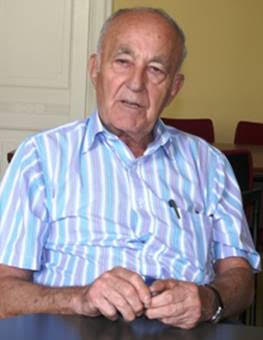
THE VOICE OF INTERNATIONAL LITHUANIA
|
VilNews has its own Google archive! Type a word in the above search box to find any article.
You can also follow us on Facebook. We have two different pages. Click to open and join.
|
Featured black
- Posted by - (0) Comment
The date 11 March will forever remain very
significant for both Japan and Lithuania
Japan mourning
2011 tsunami, Lithuania
marking 1990 freedom
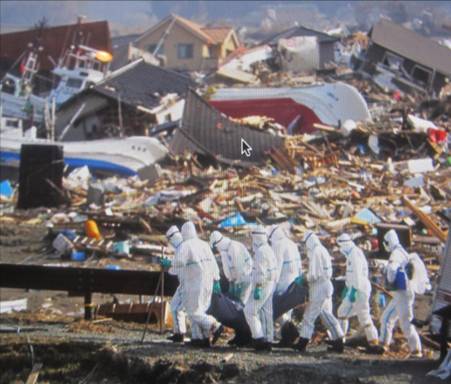
A devastating earthquake and tsunami on 11 March 2011 made Japan shake to its core. Thousands of people perished. In addition to massive property damage, the Fukushima nuclear power station sustained critical damage to its reactors which, in turn, caused reactor melt downs and uncontrolled releases of radiation/radioactive materials.
11 March is a date that will forever remain significant in both Japan and Lithuania. It was on this date in 1990 that the members of the Lithuanian Parliament signed the Act of Independence, which was the first major step towards the country's liberation from the Soviet Union after 50 years of living under occupation.
And it was on this date in 2011 that a large earthquake and subsequent tsunami hit northern Japan in a most dramatic, damaging way. One of Japan's nuclear power plants was hit hard, with the result that radiation devastated a large area and many people’s lives.
Only two of Japan's 54 reactors are now running while those shut down for regular inspections undergo special tests to check their ability to withstand similar disasters.
In the midst of all this, Japan and Lithuania have signed an agreement on nuclear cooperation, as the industrial giant Hitachi has been selected to build a brand new nuclear power plant in Lithuania, expected ready by 2020. While the meltdown crisis in Fukushima has raised awareness around the world of the dangers of nuclear power, Lithuania, with its limited natural resources, appears to have little choice but to rely on atomic energy to reduce its heavy reliance on natural gas from Russia.
- Bookmark :
- Digg
- del.icio.us
- Stumbleupon
- Redit it
- Posted by - (1) Comment
The date 11 March will forever remain very
significant for both Japan and Lithuania
Japan mourning
2011 tsunami, Lithuania
marking 1990 freedom

A devastating earthquake and tsunami on 11 March 2011 made Japan shake to its core. Thousands of people perished. In addition to massive property damage, the Fukushima nuclear power station sustained critical damage to its reactors which, in turn, caused reactor melt downs and uncontrolled releases of radiation/radioactive materials.
11 March is a date that will forever remain significant in both Japan and Lithuania. It was on this date in 1990 that the members of the Lithuanian Parliament signed the Act of Independence, which was the first major step towards the country's liberation from the Soviet Union after 50 years of living under occupation.
And it was on this date in 2011 that a large earthquake and subsequent tsunami hit northern Japan in a most dramatic, damaging way. One of Japan's nuclear power plants was hit hard, with the result that radiation devastated a large area and many people’s lives.
Only two of Japan's 54 reactors are now running while those shut down for regular inspections undergo special tests to check their ability to withstand similar disasters.
In the midst of all this, Japan and Lithuania have signed an agreement on nuclear cooperation, as the industrial giant Hitachi has been selected to build a brand new nuclear power plant in Lithuania, expected ready by 2020. While the meltdown crisis in Fukushima has raised awareness around the world of the dangers of nuclear power, Lithuania, with its limited natural resources, appears to have little choice but to rely on atomic energy to reduce its heavy reliance on natural gas from Russia.
Japan today – 11 March 2012
Through silence and prayers, people across Japan on Sunday remembered the massive earthquake and tsunami that struck the nation one year ago, killing just over 19,000 people and unleashing the world's worst nuclear crisis in a quarter century.
A moment of silence was observed at 2:46 p.m. -- the exact time the magnitude-9.0 quake struck on March 11, 2011.
In the devastated northeastern coastal town of Rikuzentakata, a siren sounded and a Buddhist priest in a purple robe rang a huge bell at a damaged temple overlooking a barren area where houses once stood.
At the same time in Tokyo's National Theater, Emperor Akihito, Empress Michiko and Prime Minister Yoshihiko Noda stood in silence with hundreds of other people dressed in black at a memorial service.
An anti-nuclear protest took place in downtown Tokyo on Sunday amid growing public opposition to atomic power in the wake of the disaster, the worst since Chernobyl in 1986.
The quake was the strongest recorded in Japan's history, and set off a tsunami that towered more than 20 meters (65 feet) in some spots along the northeastern coast, destroying tens of thousands of homes and wreaking widespread destruction.
Today, some 325,000 people rendered homeless remain in temporary housing. While much of the debris has been gathered into massive piles, very little rebuilding has begun.
The government says the damaged Fukushima Dai-ichi nuclear plant, where three reactor cores melted down after the tsunami knocked out their vital cooling systems, is stable and that radiation coming from the plant has subsided significantly. But the plant's chief acknowledged to journalists visiting the complex recently that it remains in a fragile state, and makeshift equipment — some mended with tape — could be seen keeping crucial systems running.
Only two of Japan's 54 reactors are now running while those shut down for regular inspections undergo special tests to check their ability to withstand similar disasters. They could all go offline by the end of April if none are restarted before then.
The Japanese government has pledged to reduce reliance on nuclear power, which supplied about 30 percent of the nation's energy needs before the disaster, but says it needs to restart some nuclear plants to meet Japan's energy needs during the transition period.
Japan's prime minister has acknowledged failures in the government's response to the disaster, being too slow in relaying key information and believing too much in "a myth of safety" about nuclear power.
"We can no longer make the excuse that what was unpredictable and outside our imagination has happened," Prime Minister Yoshihiko Noda told a group of reporters last weekend. "Crisis management requires us to imagine what may be outside our imagination."
Lithuania today – 11 March 2012
Lithuania was today celebrating the 22nd anniversary of declaring independence from the former Soviet Union, the first of the iron-curtain states so to do after Lithuania had been swallowed up by Moscow in 1940 under the Molotov-Ribbentrop pact between Nazi Germany and the Soviet Union. Many believe Lithuania’s declaration helped accelerate the fall of the Soviet regime itself.
Professor Vytautas Landsbergis, Chairman of Lithuania’s Supreme Council, was the one who proclaimed Lithuania independent late evening on the 11th of March 1990. 124 members of the Supreme Council had voted for the breakaway. Nobody voted against.
Despite the reformist moves by Mikhail Gorbachev in Moscow, Lithuania’s decision angered the Soviet leadership. In January ’91, the tensions spilled over. Soviet tanks killed 14 people in clashes at the TV tower in Vilnius.
But later that year in the Soviet Union hardliners failed to overthrow Gorbachev, and the movement towards democracy gained momentum.
By early 1993, the Soviet tanks were beating a retreat. The international community had recognised Lithuania’s independence.
11 March has since 1990 been celebrated as Lithuania's second national day, after 16 February which marks the country's declaration of independence of 1918. Unfortunately, the country's authorities have for several years allowed neo-Nazi elements make their mark on this important freedom day.
This year's celebration was different in a positive way, seeing thousands of freedom-loving and open-minded people filling up the country's main street, Gedimino Avenue in Vilnius, to a worthy demonstration of the fact that Lithuania is again a land of wisdom and maturity.
- Bookmark :
- Digg
- del.icio.us
- Stumbleupon
- Redit it
- Posted by - (2) Comment
UŽUPIS SPRING 2012
Slide show with music. Full screeen recommended!
Photos: Aage Myhre
Director: Cassandra Myhre
Music: Music: Sergey Kuryokhin –
Morning Exercises in the Nuthouse
Užupis is a neighbourhood located in the outskirts of Vilnius’ Old Town. Užupis means “on the other side of the river” in Lithuanian language and refers to the Vilnia River. The name Vilnius was derived from the Vilnia. Užupis is popular with artists, and has been compared to Montmartre in Paris due to its bohemian atmosphere. The district houses art galleries, artists’ workshops, and cafés. On April Fools Day in 1997, the district declared itself an independent republic (The Republic of Užupis), replete with an army of 12 personnel. Užupis is largely characterized by dilapidated buildings, courtyards and cobblestone streets that haven‘t been renovated for decades. But when the music reverberates over the cobbles in the late evenings you will certainly fall in love with this unique part of Vilnius. The atmosphere – filled with love, music, smells and happy people – will certainly catch your soul…
- Bookmark :
- Digg
- del.icio.us
- Stumbleupon
- Redit it
- Posted by - (1) Comment
Gedimino pr. Sunday 11 March at 16.00:
Let’s meet to celebrate
freedom & tolerance!
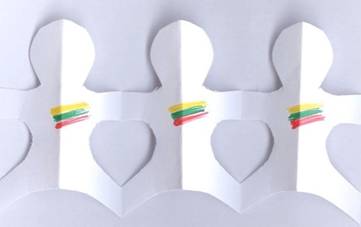
Sunday 11th of March it is 22 years since the members of the Lithuanian Parliament signed the State of Lithuania's independence declaration. At the risk of their own lives, these brave men and women put their signatures on a paper that clearly stated that they and the Lithuanian people would no longer accept to live under occupation and oppression.
Lithuania became a free and democratic country as a result of these signatures, and even if the country’s development since then has not been perfect, it is still reason to celebrate the freedom and clearly demonstrate that we value living in a free Lithuania where the concepts of tolerance, democracy, openness, respect and compassion are the ideals.
So bring your family and friends to Gedmino Avenue in Vilnius on Sunday 11 March at 16:00 and let us together celebrate unity, equality, openness and friendship. Only this kind of patriotism provides for the existence of a democratic state and civil society. Independence Day is what unites us, so let’s celebrate it together. Free, friendly and fearless!
The initiative is called CELEBRATING FREEDOM. Its goal is to bring together all Lithuanians who cherish the values enshrined in the Constitution – a democratic system, rule of law, equality, openness, respect for everyone, and to enjoy Lithuanian independence.
On March 11th, let us celebrate unity, equality, openness and friendship. Only this kind of patriotism provides for the existence of a democratic state and civil society. Independence Day is what unites us, and so, let’s celebrate it together. Free, friendly and fearless!
PROGRAMME:
16:00 Participants meet on Gedimino Avenue between Kudirkos Square and Independence Square. At the Entertainment Islands on Gedimino Avenue we listen to Amberlife, Skyders and other musicians, sew a Lithuanian flag with students, break dance, observe performances/dances by professional artists, beat African drums and enjoy tea and coffee (please see the map below for exact locations).
16:30 We march from Independence Square in the direction of the Music Academy with Nomeda Marcenaite and from Kudirkos Square towards the Music Academy with Arnoldas Lukosius. Join the march wherever you are.
17:00 We will open the windows of the Music and Art Academy and dance together with DJ Mark Splinter, Tomas Boo, Swix and Vaiper Despotin. The march will end by singing our national anthem, together with maestro Vytautas Juozapaitis
18:00 Conclusion of the Freedom Celebration!
We will celebrate with:
Nomeda Marčėnaitė, Vytautas Juozapaitis, Vladimiras Laučius, Artūras Račas, Diana Vilytė, Darius Kuolys, Dana Migaliova, Saulius Arvasevičius, Leonidas Donskis, Arūnas Pemkus, Monika Garbačiauskaitė-Budrienė, Rytis Juozapavičius, Algis Ramanauskas-Greitai, Dominykas Vaitiekūnas, Dainius Pūras, Ričardas Berankis, Ilja Laurs, Markas Zingeris, Jonas Ohman, Amberlife, Jurgis ir Erica Didžiuliai, Petras Geniušas, Vytautas V. Landsbergis, Giedrė Kilčiauskienė ir Empti, Gintarė Latvėnaitė, Robertas Povilaitis, Gabrielė Tuminaitė, DJ Mark Splinter, Tomas Boo, Skyders with Tomas Šileika, break-dance group from club „i17“, Schools Parliament, Student Association and others.

- Bookmark :
- Digg
- del.icio.us
- Stumbleupon
- Redit it
- Posted by - (0) Comment
Gedimino pr. Sunday 11 March at 16.00:
Let’s meet to celebrate
freedom & tolerance!

Sunday 11th of March it is 22 years since the members of the Lithuanian Parliament signed the State of Lithuania's independence declaration. At the risk of their own lives, these brave men and women put their signatures on a paper that clearly stated that they and the Lithuanian people would no longer accept to live under occupation and oppression.
Lithuania became a free and democratic country as a result of these signatures, and even if the country’s development since then has not been perfect, it is still reason to celebrate the freedom and clearly demonstrate that we value living in a free Lithuania where the concepts of tolerance, democracy, openness, respect and compassion are the ideals.
So bring your family and friends to Gedmino Avenue in Vilnius on Sunday 11 March at 16:00 and let us together celebrate unity, equality, openness and friendship. Only this kind of patriotism provides for the existence of a democratic state and civil society. Independence Day is what unites us, so let’s celebrate it together. Free, friendly and fearless!

- Bookmark :
- Digg
- del.icio.us
- Stumbleupon
- Redit it
- Posted by - (1) Comment
International Women’s Day in Lithuania:
Valentine’s Day instead of fighting for equality…
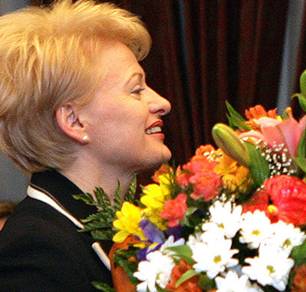
President Dalia Grybauskaitė
8th of March is International Women's Day, a day marked by women groups around the world. The day is rooted in the centuries-old struggle of women to participate in society on an equal footing with men. The idea of an International Women's Day first arose at the very beginning of the 1900s.
But in Lithuania the 8th of March is not at all characterized by women's struggle for emancipation and equality, or any sort of fighting against violence and abuse. Believe it or not, but here you will experience no single parade, no placates with demanding lines for equal rights, or any stirring speeches from women's rights activists.
The Soviet leaders were probably very anxious that the Women's Day could turn into a demonstration against the system and the many elderly, grey haired men at the top of the Kremlin. These men's smart move was to instead make the 8th of March a feast day, something in between Mother's Day and St. Valentine’s Day.
So, even today, two decades after the Soviet collapse, the 8th of March in Lithuania is the day when women receive presents, flowers, poems, text messages and lots of kind words and wishes from their men or lovers. While the 8th of March over the rest of the world makes the important point that this is a day for equality and justice between the genders, this is in Lithuania a day of romance and sweet music – a day when people celebrate more the difference than the equality between the genders.
- Bookmark :
- Digg
- del.icio.us
- Stumbleupon
- Redit it
- Posted by - (1) Comment
International Women’s Day in Lithuania:
Valentine’s Day instead of
fighting for equality…

President Dalia Grybauskaitė
8th of March is International Women's Day, a day marked by women groups around the world. The day is rooted in the centuries-old struggle of women to participate in society on an equal footing with men. The idea of an International Women's Day first arose at the very beginning of the 1900s.
But in Lithuania the 8th of March is not at all characterized by women's struggle for emancipation and equality, or any sort of fighting against violence and abuse. Believe it or not, but here you will experience no single parade, no placates with demanding lines for equal rights, or any stirring speeches from women's rights activists.
The Soviet leaders were probably very anxious that the Women's Day could turn into a demonstration against the system and the many elderly, grey haired men at the top of the Kremlin. These men's smart move was to instead make the 8th of March a feast day, something in between Mother's Day and St. Valentine’s Day.
So, even today, two decades after the Soviet collapse, the 8th of March in Lithuania is the day when women receive presents, flowers, poems, text messages and lots of kind words and wishes from their men or lovers. While the 8th of March over the rest of the world makes the important point that this is a day for equality and justice between the genders, this is in Lithuania a day of romance and sweet music – a day when people celebrate more the difference than the equality between the genders.

In 2010 President Dalia Grybauskaite used her address to the United Nations to call for much greater coordinated efforts to achieve global gender equality.
Violence against women
|
|
|
|
|
|
63.3 % of Lithuanian women have been victims of male physical or sexual violence or threats
after their 16th birthday. This represents today such a severe problem that, in my opinion,
President Grybauskaite should personally get involved and take the necessary measures
to turn around this devastating trend. Klaipeda municipality wants to be a pioneer-
municipality in terms of focus on domestic violence and abuse of women,
and I believe it could be a good idea for the President to support
these good efforts and make Klaipeda a positive show case for
constructive focus on domestic violence and
violence against women.

About women’s situation in Lithuania
- The Law on Equal Opportunities was adopted in 1999, but the system of implementation of the legislation and the mechanism of protecting women’s human rights are not sufficient enough to achieve optimal results.
- A very important step forward for the implementation of gender equality in Lithuania was done by the Government in 2003 by adopting the “National programme for Equal Opportunities for Women and Men 2003-2004” and 2005-2009.
- An inter-Ministerial Commission on Equal Opportunities for Women and Men was established in year 2000 to coordinate the implementation of the gender mainstreaming policy.
- In May 2009 Dalia Grybauskaite was elected Lithuania's first female president.
Lithuania has made it to the top-twenty list of countries worldwide in terms of security of equal opportunities for men and women, outmatching its neighbours and some of the EU’s old-timers.
According to the World Economic Forum that estimates economic, legal and social gaps between the genders, in 2007 Lithuania placed 14th, advancing by 7 places from 21 in 2006 as the BNS reported. Lithuania has been given a 72.3 percent score, while 100 percent means absolute equality and 0 percent — total discrimination. Latvia (73.3 percent) has moved up by 6 positions over a year to the 13th place, Estonia (70.1 percent) placed 30, one step above its position as of last year.

Population and families
- The number of women in Lithuania exceeds the number of men. There are 114 women per 100 men.
- The average life expectancy 78 years for women and 66 years for men.
- Divorced, widowed and single women make up 48% of all women, men - 39%. The proportion of women without spouse is not diminishing.
- A Lithuanian woman gives birth to her first child at the average age of 25. The proportion of women without a spouse is not diminishing.
- After divorces, about 10 thousand children remained without one of their parents (mostly they are with their mothers).
Education
- The number of women students in higher schools exceeds that of men students. There are 60% of women students and 40% of men students in higher schools. But among scientists 37% are women and among doctors habillis just - 15%.
- Distribution of students by gender is very diverse in different modules of education. Women students make up 75% of those studying social services and services for individual persons, 79% of those studying pedagogic and 79% - health care. In transport and security services, though, men students make up 87%, engineering - 81%, computing - 76%.
- The majority (86%) of pedagogues of general schools are women.
Employment and labour market
- Economic activity of women is lower than that of men. The activity indicator of men is 74%, while that of women - 66%.
- Unemployment rate of men (15%) is higher than that of women (13%). Women have limited possibilities to combine family life with participation in economic activity. 86 thousand women or 14% of all working women have part-time work (men 10%).
- The number of men and women by economic activity is rather varied. The majority of those working in health care are women as well as in social work and education, while men predominate in construction, electricity, gas and water supply.
- Managing positions in all economic activities are mainly occupied by men. For example, women constitute 86% of secondary school pedagogues, though directors of these schools are primarily men (62%).
- Women’s earning as percentage of men’s is 81.2%, in public sector 74.9% and in private sector- 85%. women are still make lower salaries than men. Women’s average gross wages per hour was 19.3 % lower than men’s wages In 2007. Women made up for 31 % of businesspeople in Lithuania in 2007, as compared with 26 % in 2006.
Participation in administration and decision-taking
- The number of women in the Seimas (Parliament) (11%) is markedly lower than that of men, in the Government (ministers vice-ministers and minister‘s advisers) - 28%, and in Municipality Councils - 21%.
- More men than women have their own business. About 40% of women have their own small or medium size enterprises.
- Women make up 37 % of all leaders in the Lithuanian ruling elite such as the parliamentarians, senior state officials and executives of companies and establishments

women trafficking
Lithuania has become in recent years a country of women export and transit between Eastern, Central and Western European countries. Poverty and unemployment force many women into prostitution. Different sources suggest that women from different social-demographical levels are involved in the sex-industry, mainly by young girls and women (average age – 24.5 years old) from so called risk groups. Experts claim that the geography in trafficking women from Lithuania is changing: if earlier it was Israel, Greece, United Arab Emirates, and Turkey, now main flows extend to Germany, Holland, Great Britain, France, Sweden, and Spain.
One of the problems in dealing with trafficking issues in Lithuania is lack of statistics and reintegration of victims into the society. As a public opinion survey done in 2002 by request of International Organization for Migration (IOM) suggests, up to 53.4% of Lithuanian people think “many” or “very many” girls are trafficked abroad to work as prostitutes by deceit, and 6.7% of people face this phenomenon in their close social environment, i.e. there were attempts made to traffic their close friend, relative, colleague, acquaintance. (“Trafficking in women: problems and decisions“ IOM, Institute for Social Research, 2004).

violence against women
Violence constitutes one of the most actual problems in Lithuania. Most people of Lithuania have suffered from violence at least once in their life. Males usually experience violence in public places, boys in parents’ families. Women are usually victims of sexual violence or violence in their own family…
Domestic violence
Violence, especially domestic violence, is one of the main problems women are facing in nowadays Lithuania.
Violence based on gender conflict, such as battering or any other domestic violence, sexual depravation and abuse, trafficking of women and children, forced prostitution and sexual harassment are incompatible with honour and dignity of a person.
There is lack of high-skilled officials, capable to assess situations of domestic conflicts, to find out sources for such behaviour and to assist victims or counsel the population in this field; insufficient training for judges, police officials, social teachers and social workers and doctors capable of dealing with violent men. Police and courts are avoiding the cases of domestic violence unless the victim is severely beaten or killed. All possible police measures against the perpetrator are very restricted and underused to protect the victim of violence.
The network of crisis centres providing support to victims of violence is insufficient. Many crisis centres were established and are operating on the initiative of non-governmental organisations. According to the data gathered by the Women’s Issues Information Centre, there now are 15 Crisis Centres and 6 Shelters for battered women, but they do not cover the whole territory of the country and only 2 of them are supported by Municipalities.
Crisis centres providing support to the victims of violence and working with perpetrators should be established following the territorial principle with active participation of municipalities.
A multiplex approach towards violence, covering support to violence victims, application of sanctions on perpetrators, awareness raising of the public, specialists and violence victims, education and training, law enforcement systems, strengthening the role of legal institutions and, health care, is still rather limited. Therefore, it is obvious that there is lack of appropriate complex programmes addressing the issues and covering the respective areas including coordination of actions of various public and non-governmental institutions.

Victim survey report – the sad reading
* 63.3 % of Lithuanian women have been victims of male physical or sexual violence or threats after their 16th birthday.
* 42.4 % of all married and cohabiting women have been victims of physical or sexual violence or threats of violence by their present partner.
* 53% of all women who had lived in relationships which had already terminated experienced violence or threats by their ex-partners.
* 11 % of Lithuanian women had at least once, after their 16th birthday, been victims of male physical or sexual violence or threats, perpetrated by a stranger, 8.2 % - by a friend, and 14.4 % by an acquaintance or relative.
* 71.4 % of Lithuanian women after their 16th birthday have been victims of sexual harassment or sexually offensive behaviour by a stranger, and 43.8% by a known man.
* 26.5 % of Lithuanian women after their 16th birthday had experienced sexual abuse by a stranger; 18.2 % by a known man; 17 % were attempted to be coerced into sexual intercourse by their date.
* 3.4 % of all victimised women reported that the experienced violence did not affect them, the absolute majority reported that this had caused hatred, helplessness, sorrow or other negative emotions.
* 10.6 % of the victims reported the most serious incident to the police.
* Women who were victimised in their parental families more often were victimised in their marital families; women whose mother was abused by the spouse, more often experienced violence by their spouses; men whose father had been violent against the mother, had been more often violent against their own partner.
* 75.3 % of adult Lithuanian women do not feel safe from risk of assault.
* 79 % of Lithuanian women believe that the home is the safest place for women and children.
Source: http://www.lygus.lt/ITC/files_smurtas/giedre1.doc
Dr. Giedrė Purvaneckienė
Aggression only moves in one direction – it creates more aggression
Margaret J. Wheatley
- Bookmark :
- Digg
- del.icio.us
- Stumbleupon
- Redit it
- Posted by - (0) Comment
VilNews focus in March-April
Healing the wounds
between LT-Americans
and the homeland
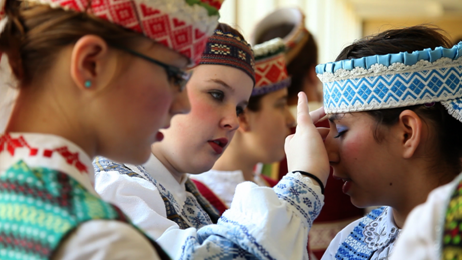
Photo: National Lithuanian American Hall of Fame
Aage Myhre, Editor-in-Chief
aage.myhre@VilNews.com
The relationship between Lithuania’s diaspora groups in the U.S. and the home country Lithuania is not always the best. Many here in Lithuania still believe that those who left, whether for economic or political reasons, had very comfortable lives compared to those who stayed behind and had to fight through several decades of inhuman oppression and abuse by the Soviet occupiers.
Many Lithuanians in the United States believe in turn that the mother country does not welcome them to return or collaborate on improving the development of the nation called Lithuania, and have been critical about ongoing corruption, that rule of law is still not working effectively, etc.
VilNews will through the second half of March and early April focus on this topic, and we hereby invite all with views to prepare posts; in the form of blogs, comment articles or information you think might shed light or be of benefit to the relationship. The goal is to build bridges and contribute to reconciliation!
These are some of the challenges and opportunities we face:
1.
Lithuanian-Americans played a significant role in the post-war years, until Lithuania's recovered independence in 1990-1991, by constantly exerting pressure on the U.S. President and leaders in other Western countries so that they would pressure the Soviet Union to allow the Baltic countries freedom after the Soviet occupation that took place during World War II. Now, as more than 20 years have passed since the freedom bells rang, the question is whether the Lithuanian-Americans have a role to play also today? See our article https://vilnews.com/?p=8899
2.
“The majority, I believe, are disappointed and discouraged with the present president’s seemingly unfriendly view toward Lithuanian-Americans and others abroad.” This said Regina Narusiene, President of the World Lithuanian Community, in a recent interview (see https://vilnews.com/?p=6704), based on a comment referred to in The Baltic Times, where President Grybauskaite should have said that most prominent U.S. Lithuanian émigrés, instead of focusing on developing U.S. - Lithuanian business ties, prefer providing political advice to the Lithuanian authorities, which may not be that necessary nowadays. She was supposedly “disappointed by Lithuanian émigrés’ inability to attract U.S.-based investments to Lithuania.” Here in VilNews we often hear Lithuanian-Americans say they do not feel welcome to their home country, and that Lithuania's current president seems to antagonize them. What are our readers’ comments to this?
3.
In a VilNews interview Regina Narusiene told about her youth in Chicago, after she and her family had settled there after escaping from Lithuania in 1944. One of the things she said, was: “I realized that my father was afraid of informers who could make life difficult for us, for our relatives who remained in Lithuania, and for the Lithuanian partisans who kept on fighting against the Soviet occupants well into the 1950s. The KGB had their own spies within the Lithuanian communities in the U.S., so we were extremely careful with what we said outside the home." Now, when the KGB archives have been made public, are there new traces of KGB post-war activities to be found also in the U.S.?
4.
In a meeting at the Lithuanian Embassy in Washington last year, representatives of LAC (Lithuanian American Council) expressed their concern on a wide range of topics including Lithuania's developing energy policy, the country’s image in the international community, emigration issues and their demographic impact, the prospect of maintaining citizenship rights of recent immigrants, ongoing cooperation between organizations of the Diaspora and Lithuania, and minority issues in Lithuania. LAC representatives suggested that Lithuania would benefit significantly by availing itself of the expertise and knowledge found in the Diaspora communities in developing energy and security policies and a host of other areas such as environmental issues, ecology, medicine, economic development, and the promotion of improved interactions between the government and the people through non-governmental organizations (ref. https://vilnews.com/?p=5031). Has there been any official Lithuanian response to this?
5.
In November 2011, the Jewish Lithuanian Heritage Project hosted a roundtable “Think Tank” at the Lithuanian embassy in Washington. The theme of the discussion was, "A comprehensive Five Year plan to improve Lithuanian-Jewish relations: Cultivating Sunflowers." (ref. https://vilnews.com/?p=9949). In a response, one of our readers wrote: “Is this about the establishment of a new Judenrat to apologize for Lithuanian anti-Semitism? “If truth be told” having a holiday party at Lithuania’s D.C. Embassy is not revolutionary. What would be revolutionary would have been, and would be, is the prosecution of Lithuanian collaborators and SS members, the prosecution of today’s neo-Nazi youth groups, reinstatement of the ban against the display of the swastika and ending the noxious practice of the Uzgavenes holiday when people dress as Jews and beg on the street.” Harsh words?
- Bookmark :
- Digg
- del.icio.us
- Stumbleupon
- Redit it
- Posted by - (0) Comment
11 March marks the restoration of
Lithuania's independence – how can the
authorities allow neo-Nazis to dominate
this important day for the nation?
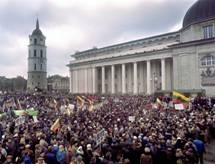 Lithuanians marching for freedom, 10 January 1990. Photo: Vitaly Armand/AFP/Getty Images |
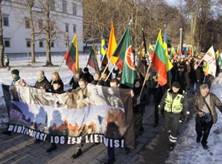 Neo-Nazis marching in Vilnius 11 March 2010. Photo: http://defendinghistory.com |
For the fifth time in the past five years a neo-Nazi parade (this year with a permit enabling a maximum of 2,000 participants) will march through the heart of Vilnius on 11 March, Independence Day, one of the proudest and most significant days for the people of Lithuania. The neo-Nazi theme will be “Homeland.”
Their display, if permitted by the government, will be taken by extremists throughout the region and Europe as a stamp of growing approval of neo-Nazi activities and a signal that the murder of about 95% of Lithuania’s Jewry during the Holocaust, largely by local collaborators, is taken lightly by today’s government.
Help us ban this blemish on a day reserved for the celebration of the internationally acclaimed bravery of the March 11th 1990 declaration of independence that was and continues to be a source of inspiration to all nations seeking freedom from oppression and foreign domination. Allow Lithuania a Day of Dignity.
Help combat racism and anti-Semitism with your signature to the following petition. You’ll find the petition text HERE.
11 March is not a day to
glorify the perpetrators

By Olga Zabludoff
When I learned that the municipality of Vilnius had again issued permits for a neo-Nazi march on Lithuania’s March 11th Independence Day, I was disturbed for more than one reason. Why would the government, which has been purporting its wish for reconciliation with its small Lithuanian Jewish community and Jews everywhere, sanction the resurrection of a Holocaust image? Why would the government, which has been purporting its wish to better its tarnished image with worldwide Jewry, accept and endorse the display of the LAF white armbands imprinted with the flaming swastika? Most survivors of the Lithuanian Holocaust are more traumatized by memories of the white-armbanded Lithuanian Activist Front than by memories of Hitler’s Aryan henchmen. It was the local LAF murderers who began to butcher Jews who had been their neighbors -- this even before their German Nazi masters/commanders came upon the scene. It was the LAF who unleashed the Holocaust in Lithuania. It was then that their slogan was born: “Lithuania for Lithuanians!” (Lietuva Lietuviams).
- Bookmark :
- Digg
- del.icio.us
- Stumbleupon
- Redit it
- Posted by - (4) Comment
11 March marks the restoration of
Lithuania's independence – how can the
authorities allow neo-Nazis to dominate
this important day for the nation?
 Lithuanians marching for freedom, 10 January 1990. Photo: Vitaly Armand/AFP/Getty Images |
 Neo-Nazis marching in Vilnius 11 March 2010. Photo: http://defendinghistory.com |
For the fifth time in the past five years a neo-Nazi parade (this year with a permit enabling a maximum of 2,000 participants) will march through the heart of Vilnius on 11 March, Independence Day, one of the proudest and most significant days for the people of Lithuania. The neo-Nazi theme will be “Homeland.”
Their display, if permitted by the government, will be taken by extremists throughout the region and Europe as a stamp of growing approval of neo-Nazi activities and a signal that the murder of about 95% of Lithuania’s Jewry during the Holocaust, largely by local collaborators, is taken lightly by today’s government.
Help us ban this blemish on a day reserved for the celebration of the internationally acclaimed bravery of the March 11th 1990 declaration of independence that was and continues to be a source of inspiration to all nations seeking freedom from oppression and foreign domination. Allow Lithuania a Day of Dignity.
Help combat racism and anti-Semitism with your signature to the following petition. You’ll find the petition text HERE.
11 March is not a day to
glorify the perpetrators

By Olga Zabludoff
When I learned that the municipality of Vilnius had again issued permits for a neo-Nazi march on Lithuania’s March 11th Independence Day, I was disturbed for more than one reason. Why would the government, which has been purporting its wish for reconciliation with its small Lithuanian Jewish community and Jews everywhere, sanction the resurrection of a Holocaust image? Why would the government, which has been purporting its wish to better its tarnished image with worldwide Jewry, accept and endorse the display of the LAF white armbands imprinted with the flaming swastika? Most survivors of the Lithuanian Holocaust are more traumatized by memories of the white-armbanded Lithuanian Activist Front than by memories of Hitler’s Aryan henchmen. It was the local LAF murderers who began to butcher Jews who had been their neighbors -- this even before their German Nazi masters/commanders came upon the scene. It was the LAF who unleashed the Holocaust in Lithuania. It was then that their slogan was born: “Lithuania for Lithuanians!” (Lietuva Lietuviams).
I am well aware of the constitutional right of free speech granted to all citizens in democratic countries. That is not even the issue here. All groups, no matter how repugnant their agendas, have the right to march and to chant. However, the government has the right to regulate when and where they march and chant. Independence Day in Lithuania is a special day on the calendar – a day to commemorate its freedom after nearly 50 years of Soviet repression. It is not a day to glorify the perpetrators and their nightmarish actions that led to the extermination of 95% of Lithuanian Jews and the large proportion of the country’s other ethnic minorities during WW2. It is not a day to honor the Nazi collaborators armed with their nauseating symbols and sickening chants. Is this under the guise of “patriotism” or a flawed, sinister concept of patriotism?
The government should not so appease neo-Nazis as to allow them to take over the heart of Vilnius on the sacred Independence Day, March 11. Under the permit issued by the government, up to 2,000 neo-Nazis are permitted to parade along Gedimino Prospect during prime time. Sure, they should be allowed to demonstrate, but on another day and at another location. Why is it that the human rights activists who plan to counter-march in Vilnius have been relegated to a much later hour -- long after the neo-Nazi procession has left its footprints on Vilnius’s major boulevard? Why is there no accommodation for the human rights community to look the neo-Nazis in the face and peacefully and legally confront them?
The governments in various cities in Germany have taken actions regarding neo-Nazi marches: they do not permit these parades along major boulevards. Some 40 years ago in Skokie, Illinois, USA (a community with a large number of Holocaust survivors), a group of fascists applied for a permit to march. After years of legal battles, permission for the march was rejected in Skokie. Instead, the group was permitted to march in a secluded area outside of Chicago. In my country there are neo-Nazis too as well as white supremacist groups and other organizations that promote hatred, intolerance and bigotry. But you don’t see them marching down Pennsylvania Avenue in Washington, DC, on July 4 – our Independence Day.
Appalled by the government’s tacit approval of annual Independence Day neo-Nazi marches since 2008, I launched, in partnership with DefendingHistory.com, a petition to the Lithuanian Ambassador to the United States urging him to persuade his government to ban the 2012 Vilnius march. On the internet some opponents have asked why a foreigner would dare to interfere in their country’s policies and politics. The answer is very simple for me: Exactly 70 years ago the world remained silent while millions of human beings were gassed in death factories and exterminated in killing fields. We all live on the same planet. We are governed by human rights which have no boundaries.
Let me tell you what I have learned from the petition. If the theme of a petition strikes a universal chord, it travels far and wide, finding its way into remote places on the planet. It takes on a life of its own and connects strangers to one another through a common cause. In the first ten days of its life, the petition drew more than a thousand signatures from 42 countries on every continent. Many were accompanied by poignant statements (reasons for signing the petition). In some cases a single email or post, either from me or from a second party, can generate 50 signatures, and those 50 signatures can multiply into hundreds more.
“This is MY country and if I sign your petition,
I will have problems, you understand?”
I stumbled onto a few Lithuanian Facebook websites and posted on their walls. First came a flurry of “Likes.” I had ventured into a network of Lithuanian youth. Then one of them asked: “This is MY country and if I sign your petition, I will have problems, you understand?” I responded that if he believed he would have problems, he should not sign. Within ten minutes his signature came in, followed in rapid succession by half a dozen others from the same town. In unity they felt empowered to speak their collective mind.
This kind of banding together for strength should send a signal to the government in Vilnius that their decent citizens want no part of resurrecting and glorifying neo-fascists. These young men and women are the true patriots who realize that their government’s sponsorship of neo-Nazism will ultimately bring their country down.
Here are some comments from Lithuanians who have signed the petition:
“I am signing because I love my country.”
“Our homeland is for all who want to live there.”
“Even in a tolerant society racial hatred cannot be tolerated.”
“I am ashamed that my nephews are growing up in Lithuania believing that such hate speech is considered ‘normal’ by the government. More should be done to support marches that are organized by tolerant Lithuanians.”
“This march is not just about racism and anti-Semitism. It’s also about homophobia, sexism, xenophobia, and an overall culture of violence, close-mindedness and hatred.”
“I have found the Lithuanian government’s failure to acknowledge and accept the Lithuanian people’s part in the only Holocaust to have taken place in Lithuania, the murder of innocent Jews during 1941 to 1944, a disgrace and a shame for all the decent folk of the country.”
“I don’t like hate and I doubly hate this because I’m ethnically Lithuanian.”
“The parade in Vilnius on Lithuanian Independence Day is a tragic continuation of centuries of anti-Semitism that has brought shame to much of Europe.”
“It is a pity that people don’t understand that Nazism will bring mankind to a catastrophe.”
“It is shameful that neo-Nazis march through the heart of Vilnius on March 11, Independence Day.”
“Live in peace and love.”
Every time a new signature is registered, the Lithuanian Ambassador to the US receives an email with the signed petition letter and comment (if one is made). Isn’t it time, Mr. Ambassador, to tell your government that the people of Lithuania do not support neo-Nazi parades? Instead of condoning these marches, Lithuanian leaders should be speaking out publicly against them -- and certainly against these marches being held in the city center of the capital on Independence Day. Instead of appeasing the ultra-nationalist factions in the country, who have a strong political voice for their numbers, leaders should lend an ear to their worthy citizens who crave tolerance and harmony. Their numbers are greater than you may wish to acknowledge. Lithuanian leaders must realize that to be a viable part of the democratic world, they must take a vigorous stance against those groups who would honour the memory of the LAF and its heinous crimes against humanity. The LAF’s legacy is Lithuania’s shame. Those courageous Lithuanians who rescued Jewish neighbors from the LAF should be Lithuania’s pride.
_______________________________________________________________________
Here is a percentage breakdown by country of the first 1,100 signatures to the petition:
United States 37.6
Lithuania 22.5 *
Israel 7.0
Latvia 5.6
United Kingdom 4.9
Canada 3.1
Russian Federation 2.8
Germany 2.5
South Africa 1.7
Australia 1.6
Estonia 1.4
Poland 1.3
Brazil 1.2
France 1.2
28 other countries 5.6
_____
100.0 %
The 28 other countries represented in the petition include: Albania, Armenia, Austria, Belarus, Belgium, Bulgaria, Burkina Faso, Czech Republic, Denmark, Dominican Republic, Finland, Greenland, Hungary, India, Ireland, Italy, Korea Republic of, Lebanon, Mexico, Moldova Republic of, Nambia, Netherlands, Norway, Portugal, Spain, Sweden, Ukraine, Uruguay.
*Includes at least 31 Lithuanians living in other countries.
_______________________________________________________________________
The petition is here:
http://www.change.org/petitions/lithuanian-ambassador-to-the-united-states-ban-neo-nazis-from-desecrating-the-dignity-of-lithuanias-independence-day
For a report on the recent neo-Nazi march which took place in Kaunas on February 16, see:
http://defendinghistory.com/300-neo-nazis-march-through-the-center-of-kaunas-on-lithuanian-independence-day-they-are-addressed-by-members-of-parliament/31188
and
http://defendinghistory.com/wp-content/uploads/2012/02/Nerijus-Povilaitis-interview-of-Dovid-Katz-on-16-Feb-2012-Lietuvos-rytas.pdf
For a parallel petition against the Waffen SS march in Riga, Latvia, please see:
http://stop16marchinriga.blogspot.com/
- Bookmark :
- Digg
- del.icio.us
- Stumbleupon
- Redit it
- Posted by - (0) Comment
Architecture carries
the identity of Lithuania
on its shoulders
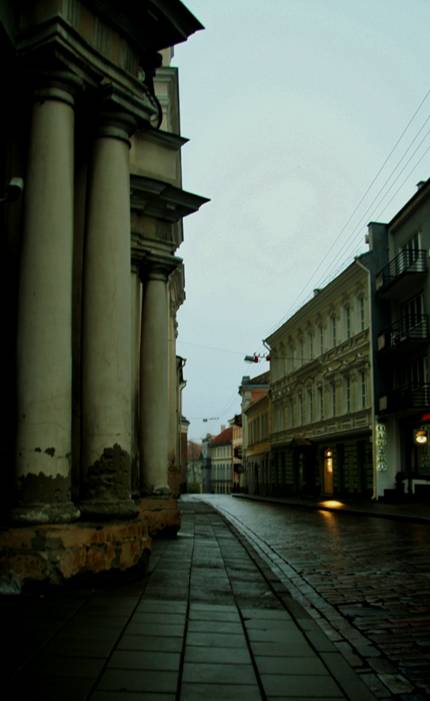
ABOVE: My first project in Vilnius Old Town, Dominikonų g. 5 , 1993-1995.
See also https://vilnews.com/?p=1549.
I had seen a lot of great architecture around the world before I came to Lithuania more than 20 years ago. Yet I had never seen a country whose identity was carried by architecture. Most countries have their unique architecture and national monuments, but here I was suddenly faced with a nation where many centuries of history and life were clearly recorded in the buildings and the surrounding, unique urban environment called the Vilnius Old Town. Walking through this exciting history book is what increasingly makes Lithuania's traditional architecture a magnet for visitors from around the world. For it is precisely here that they find the essence of architecture; experiencing that buildings, styles, streets, squares, ornaments play in perfect harmony with human life and activities, in a symbiosis found nowhere else in the world.
Text: Aage Myhre, VilNews Editor-in-Chief/architect
aage.myhre@VilNews.com
Vilnius is called the "world's most Italian city outside Italy," and also "Europe's most baroque city north of the Alps". Before the Baroque made its appearance, Vilnius was considered one of the world's three leading Renaissance cities (!), in competition with Milan and Florence. However, although the Lithuanian architecture has its roots in Italy, it also developed its own distinctive character, which now once again delights and surprises visitors from near and far.
Unfortunately, this wonderful national heritage was not preserved and continued too well during the years when Lithuania was occupied by the Soviet Union. Also today, there is devoted minimal attention to this heritage, the very identity of Lithuania. Buildings and environments that have been completed over the past 20 years have too much become pale, indifferent copies of Western countries 'modernist architecture' instead of development projects based on Lithuania's phenomenal genuine, beautiful traditions in architecture and living environments.
Fortunately, there are still ancient urban districts and buildings throughout the country that remind us about what a proud and powerful identity Lithuania had in the past. And thankfully, authorities and many others understand that these fine monuments must be preserved as the proud bearers of identity they still are.
Bravo!
But it surprises me greatly that today's architects and planners are not willing to listen to Lithuania's own ‘identity-music’ instead of following in the footsteps of the West’s often banalising, so-called modern architecture.
A Lithuanian architecture that honour and take into account the nation's identity would not cost more, it would make the new building environments more attractive and warm, and it would show the world that Lithuania is a proud nation with deep roots in culture and history, virtually unparalleled. So why wait?
Let me exemplify what I have in mind...
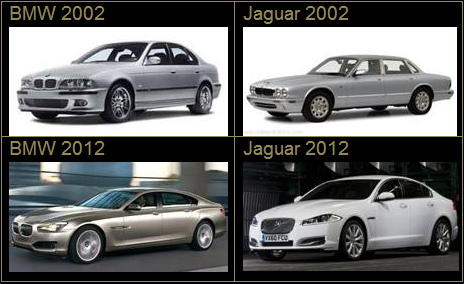
- Bookmark :
- Digg
- del.icio.us
- Stumbleupon
- Redit it
- Posted by - (3) Comment
|
|
Text: Aage Myhre, VilNews Editor-in-Chief/architect
aage.myhre@VilNews.com
Vilnius is called the "world's most Italian city outside Italy," and also "Europe's most baroque city north of the Alps". Before the Baroque made its appearance, Vilnius was considered one of the world's three leading Renaissance cities (!), in competition with Milan and Florence. However, although the Lithuanian architecture has its roots in Italy, it also developed its own distinctive character, which now once again delights and surprises visitors from near and far.
Unfortunately, this wonderful national heritage was not preserved and continued too well during the years when Lithuania was occupied by the Soviet Union. Also today, there is devoted minimal attention to this heritage, the very identity of Lithuania. Buildings and environments that have been completed over the past 20 years have too much become pale, indifferent copies of Western countries 'modernist architecture' instead of development projects based on Lithuania's phenomenal genuine, beautiful traditions in architecture and living environments.
Fortunately, there are still ancient urban districts and buildings throughout the country that remind us about what a proud and powerful identity Lithuania had in the past. And thankfully, authorities and many others understand that these fine monuments must be preserved as the proud bearers of identity they still are. Bravo!
But it surprises me greatly that today's architects and planners are not willing to listen to Lithuania's own ‘identity-music’ instead of following in the footsteps of the West’s often banalising, so-called modern architecture.
A Lithuanian architecture that honour and take into account the nation's identity would not cost more, it would make the new building environments more attractive and warm, and it would show the world that Lithuania is a proud nation with deep roots in culture and history, virtually unparalleled. So why wait?
Let me exemplify what I have in mind...
BMW and Jaguar
|
BMW 2002
|
Jaguar 2002
|
|
BMW 2012
|
Jaguar 2012
|
BMW cars have for many years developed in accordance with a significant identity line. A fast, sporty car that appeals to young, dynamic business people, albeit often with a faint 'mafia-touch'. BMW has remained true to this line and one can well see the relationship between current and earlier models.
Jaguar was long regarded as a ‘work of art’, designed to satisfy drivers with high demands for classic design combined with top performance. BMW was seen as a vehicle of raw power, while the Jaguar simply was aristocratic and beautiful. But then, for the latest models, Jaguar started making BMW-copies instead of sticking to their own identity as a car for connoisseurs. A little sad to see that lovely Jaguar fell for such a temptation, and thus made the car market a little less inspiring and versatile...
Lithuanian ‘identity architecture’ Anno 2012?
NEW BUILDINGS AT EXISTING STREETS IN OLDER URBAN AREAS:
As for renovation and new construction in older urban areas, I am convinced that one should stick very strictly
to the originals. If we are talking about a new building to fill in a gap in a row of houses, I believe one should strive to create identical copies of what once existed on the site. The building below, in Didzioji g here in Vilnius, in my opinion is a good example of exactly that. The building is less than 10 years old, but is built as a true copy of the building that once stood right here.
Some would say we in our time must be allowed to build, fill in, in styles that belong to our day, even in an older urban environment. I strongly disagree. For me, this sounds as an argument to introduce new items, colours, etc., in a genuine Rembrandt painting when it is being restored...

Copying the original building.
NEW BUILDINGS ON NEW SITES IN OLDER URBAN AREAS:
It is not often constructed new buildings here in Vilnius Old Town. There are simply very few vacant spaces.
But now is finally something happening. A brand new apartment complex is under construction in the heart of the Old Town, on a site that until recently was reserved for old garages from the Soviet era. Kotrynos Vartai is the name, a complex of apartments and two commercial premises being built at Klaipedos street next to St. Catherine’s Church and the Teachers’ House. The new complex takes carefully into account the Vilnius old town architecture. Bravo!

Keeping the original style.
NEW ARCHITECTURE ON SITES NEAR OLDER URBAN CENTRES:
I think a combination of genuine, original building materials, such as yellow-brown-red bricks will be a good
item to include in today's buildings outside the centre of Vilnius. In such a way we can pass on the legacy of centuries of good architectural traditions as we find them represented in the Vilnius Old Town. The more modern times may be well represented by a far more modern material, namely glass. Below I show three different ways to combine these two building materials. Distinct, modern, traditional and with dignity...
|
|
|
|
New building styles for districts near the old city centres of Vilnius, Kaunas and Klaipeda. Genuine building materials combined with glass, demonstrating respect and affiliation to the ancient ‘identity/architecture’ of Lithuania and at the same time looking to the future, demonstrating openness, light and distinctiveness.
|
LITUANIA’S ANCIENT IDENTITY ARCHITECTURE IS AS MUCH ABOUT OUTDOOR ROOMS AS ABOUT THE BUILDINGS THEMSELVES: What is happening between the buildings is as important as the buildings themselves, and is another utterly defining aspect of Lithuania’s identity architecture. Holistic thinking is a hall mark of this architecture. Just look at how perfectly well Vilnius Old Town functions as a symbiosis of buildings, streets, squares, ornaments, colours and more – in perfect harmony with people and the very life of the city! It is often so that the way the surroundings are planned determine whether a new project is successful or not, and Vilnius Old Town has a lot to teach us in this respect. The shapes of the outdoor rooms, and how they connect the buildings around, is extremely important for good urban planning. Streets, squares, lawns, parks, fountains, benches, lamp posts, parking are all elements that are supposed to play together and serve the people of any urban area. There are so many items to play with, even outdoors. Think water, fountains, bridges, decorations, ornaments; items that tell something about what happens inside the buildings around and the people using the buildings and the services offered, being it in an office building, a restaurant, a hotel or a service provider... And most important of all, all elements must have human dimensions. So that people who come to the building will be feeling well, feeling joy. All new buildings should radiate kindness and dignified service attitudes towards customers and the general public...
What is happening between the buildings is as important as the buildings themselves, and is another utterly defining aspect of Lithuania’s identity architecture. Holistic thinking is a hall mark of this architecture. Just look at how perfectly well Vilnius Old Town functions as a symbiosis of buildings, streets, squares, ornaments, colours and more – in perfect harmony with people and the very life of the city!
|
|
|
|
|
|
|
|
|
|
|
There are so many items to play with, even outdoors. Think water, fountains, bridges, decorations, ornaments;
items that tell something about what happens inside the buildings around, and the people using the buildings
and the services offered, being it in an office building, a restaurant, a hotel or a service provider...
- Bookmark :
- Digg
- del.icio.us
- Stumbleupon
- Redit it
- Posted by - (0) Comment
Lithuanian camps in
postwar Germany issued
their own money!

Frank Passic, Michigan, USA.
Dear readers,
We are delighted and honored that Mr. Frank Passic has graciously offered to share with us his vast knowledge of Lithuanian numismatics. In this first article he provides us with a very interesting look into how Lithuanians living in Displaced Persons camps, following World War II, dealt with the situation of currency to help them survive in their daily lives.
Frank Passic of Albion, Michigan has collected, researched, and written about Lithuanian numismatics for many years. His educational displays of Lithuanian money have won numerous awards at state and national coin shows in the United States. Of Lithuanian heritage, his maternal grandparents emigrated from Lithuania to America just prior to World War I. Frank may be contacted at: albionfp@hotmail.com
We know you will enjoy this first article and Mr. Passic has agreed to share with us many more of his writings so we definitely have a lot to look forward to – Ačiū labai Frank

Money from the Scheinfeld Displaced Person Camp.
Bavaria, Germany, 1946.
- Bookmark :
- Digg
- del.icio.us
- Stumbleupon
- Redit it
- Posted by - (4) Comment
|
Dear
readers,
We
are delighted and honored that Mr. Frank Passic has graciously offered to
share with us his vast knowledge of Lithuanian numismatics. In this first
article he provides us with a very interesting look into how Lithuanians
living in Displaced Persons camps, following World War II, dealt with the
situation of currency to help them survive in their daily lives.
Frank Passic of Albion, Michigan has collected, researched, and written about Lithuanian numismatics for many years. His educational displays of Lithuanian money have won numerous awards at state and national coin shows in the United States. Of Lithuanian heritage, his maternal grandparents emigrated from Lithuania to America just prior to World War I. Frank may be contacted at: albionfp@hotmail.com We know you will enjoy this first article and Mr. Passic has agreed to share with us many more of his writings so we definitely have a lot to look forward to – Ačiū labai Frank Also
have a look at: http://www.albionmich.com/
Su
pagarbe – Vincas Karnila
|
Lithuanian camps in postwar Germany issued their own money!

Frank Passic.
By
Frank Passic, Albion, Michigan.
albionfp@hotmail.com
In May 1945 Europe was in shambles. With the fall of the Nazis, Germany was sliced into Allied zones, and the process of rebuilding Europe began. War and its aftermath had uprooted thousands of people from their homes and countries, and many found themselves liberated from Nazi concentration camps with no place to go.
The care of refugees in Europe was handled by the United Nations Relief and Rehabilitation Administration (UNRRA) until 1947, when responsibility was transferred to the International Refugee Organization (IRO), which also was a function of the United Nations. These refugees became known as displaced persons (DPs), and the Allied powers soon realized they had a delicate problem to solve.

A camp publication features this photograph of "Lithuania,
Latvia and Estonia..
.waiting for the dawn of
their independence."
By the end of the War, roughly 70,000 Lithuanians had made their way into Germany and Austria. At first, the Allied powers thought these people took up residence in western Germany against their will and that they naturally would prefer to return to their homeland, but such was not the case. Lithuanians who had made it to the West did not want to relocate back to their Soviet-occupied homeland.
The Allies, including the United States, initially accused Lithuanian DPs of being former Nazi sympathizers. They later realized that the actual reason for their reluctance to return to their country was based on the fact that having witnessed the Soviet atrocities in Lithuania in 1940-41, they certainly would be executed or deported to Siberia if they set foot on their native soil. Still, to the horror of many, some were forcibly sent back by the Allies, never to be heard from again.

A satirical drawing shows Lithuanians feeing Stalin's rays. The
caption translates,
"In our land there
is still Big Heat."
Accordingly, suspicion and distrust ran high in DP camps housing Lithuanian refugees. A large percentage of the inhabitants were professionals – physicians, engineers, jurists, teachers, public officials, artists and clerks – and would have been targeted instantly by the Soviet occupational regime if they returned home.
Gradually, western nations accepted the reality of the situation and opened their doors to large numbers of immigrants from DP camps. Many DPs made their way to new lives in the United States, Canada, Australia, Great Britain, and Argentina in the late 1940s and early 1950s.
Many DP camps issued their own internal currency, which was used to pay workers and others within their confines. Generally, the money was spent at the canteen or “P.X.” for needed supplies. A virgin field for collectors and researchers alike, DP camp money has caught the attention of numismatists in recent years. Examples would sometimes appear in estates as former camp members became deceased.

A
Lithuanian cartoon depicts DPs "acting on Uncle Truman's cake."
With few exceptions, DP camp money research is scattered, and numismatic information is often incomplete. However, one must bear in mind that each camp’s money was redeemed and destroyed, and residents had little cause to save it.

Pictured is Schwarzberg Castle, a 17th century structure that
served as the site of a
Lithuanian DP camp in
Scheinfeld, a small town in Bavaria.

UNRRA Food Stores employees at the Lithuanian DP camp in
Seedorf.

Camp administrators draw rations from the canteen.
There were several Lithuanian Displaced Persons camps which issued camp money, such as: Scheinfeld, Regensburg, Bad Worishofen, Ludwig, and Nordlingen, which will be discussed here.
SCHEINFELD
Atop a sandy slope on the outskirts of Scheinfeld, a small town in Bavaria halfway between Nuremberg and Wurzburg, sits a 17th century castle built by the Schwarzenberg family. It was in the imposing structure that a Lithuanian DP encampment was established on April 28, 1946, to house 1500 Lithuanians transferred from the DP camp in Regensburg. The camp was headed by an American reserve officer of Lithuanian descent, Stanley B. Milnus, whose parents had come from the Vilnius region of Lithuania. Chairman of the camp’s committee was Professor Ceslovas Masaitis, a Lithuanian mathematician.
Administered and occupied entirely by Lithuanians, the Scheinfeld camp was liquidated in 1949 after its administrator, Steponas Birutis, left for America. Committee chairman Masaitis later instituted a Lithuanian fraternal order in the United States that carried the “Scheinfeld” name. 1
The DP issues of Scheinfeld, Team 569, are perhaps the most familiar of the Lithuanian camp money. Originally unknown in numismatic circles, the money suddenly appeared on the market in the early 1970s, when a small hoard surfaced in England. Because the specimens were in nearly Uncirculated condition, many doubted if the money was actually put to use. Furthermore, interviews with former DPs reveal that German and military monies circulated within the camp, and no one remembered ever seeing camp money.
However, UNRRA records for the Scheinfeld camp have shed some light on the mysteries surrounding the currency used in camp. In a report dated June 15, 1946, UNRRA Team 569 Director Anton A. Pritchard stated:
In the month since the camp has been opened, the following welfare projects have been organized:
1) A camp
newspaper is published daily with an English translation for the director;
2) An amenity Canteen is functioning with great success;
3) We have established an internal money system by which workers are paid and
which works in conjunction with the Canteen…
Under the present Canteen System of paying workers and the anticipated cessation of American cigarettes from Red Cross parcels, present supplies of amenity items will not meet the demand, and an internal economic crisis can be foreseen. Particularly items needed are shaving soap, cigarettes, razor blades, brilliantine, hair and bobby pins, combs.
The following suggestions are respectively submitted, with the full realization of their lack of originality:
1) That
amenity supplies (Canteen) be increased so that economic stability can be
maintained and so that payment for working can be kept sufficiently attractive;
2) That a source of cigarettes can be found. 2
Another report, dated July 15, 1946, reiterates the creation of an internal camp money system and the scarcity of amenities. 3
Therefore it appears that Scheinfeld Lithuanian camp money was used in the canteen from May through July 1946. However, because of acute shortages of goods, opportunities to actually spend the money were greatly diminished, and the monetary system subsequently was abandoned.
It is surmised that all Scheinfeld notes were destroyed, with one authority keeping an estimated fifteen sets as souvenirs, thus accounting for the hoard which surfaced in England.

10 cents

50 cents

One dollar
Scheinfeld camp money is bilingual – Lithuanian on the obverse, English on the reverse. All notes feature a red serial number on the face, while a blue, hand-stamped “Scheinfeld UNRRA (Team 569)” emblem resembling a globe appears on the back. Issued in denominations of 10 and 50 centu and 1 doleris, the notes bear the inscription UNRRA TEAM 569, SCHEINFELD / (denomination) / CAMP MONEY in Lithuanian and English.
|
DENOMINATION |
COLOR |
SIZE |
|
10 centu |
Light green |
104 x 51mm |
|
50 centu |
Dark green |
118 x 63mm |
|
1 doleris |
Tan |
155 x 70mm |
REGENSBURG
Until the establishment of the Scheinfeld camp in April 1946, its 1500 residents were interred at the DP camp in Regensburg. Apparently, Scheinfeld camp money was patterned after the money circulated at Regensburg, for a 1-dollar note in a private collection is identical to the Scheinfeld 1 doleris, except that the text on both sides is in English.
|
DENOMINATION |
COLOR |
SIZE |
|
1 dollar |
Tan |
155 x 70mm |
BAD WORISHOFEN
The Lithuanian encampment in Bad Worishofen was located 65 kilometers west of Munich. A product of Team 558, notes circulating in this DP camp were issued in denominations of 1, 5 and 20 units and shared the same dimensions. The English inscription reads D.P. CENTER BAD WORISHOFEN / UNRRA (denomination) UNITS / UNRRA / TEAM 558. A six-digit serial number printed in red appears at the bottom center, and a leafy design surrounds the perimeter. In the lower left corner, outside the border appears in German, DRUCK: HANS HOLZMANN, BAD WORISHOFEN, VII. 46. 15000, which translates “Printed by Hans Holzmann, Bad Worishofen, July 1946, 15000 printed.”
|
DENOMINATION |
COLOR |
SIZE |
|
1 unit |
Light Yellow |
110 x 76mm |
|
5 units |
Peat |
110 x 76mm |
|
20 units |
Green |
110 x 76mm |

Five units
LUDWIG
The Lithuanian encampment in Ludwig was part of the Dillingen UNRRA district, Team 308. Money used in this camp consisted of two issues; the first was printed on white paper, the second on light-violet paper. Initially, the notes were used to pay day laborers, but eventually all the camp’s inhabitants received payment in this form, with men receiving white notes and women receiving violet notes!
Issued in denominations of 1, 2, 5, 10 and 50 units, the Ludwig camp money was designed by Lithuanian artist Antanas Rukstele (1906-1990), a well-known as a painter and ethnographer. Rukstele had served as curator of the Ciurlionis Art Gallery and the ethnographic section of the Museum of Culture in Kaunas, Lithuania. As a painter he was responsible for a great many landscapes, portraits, thematic compositions and book illustrations.

Rukstele lived in the Ludwig DP camp until 1949 and emigrated to the United States in 1955. Apparently, UNRRA officials were so pleased with Rukstele’s artwork that they used his same basic design for the Polish DP money issued in the Luitpold camp, also in the Dillingen district.
UNRRA records confirm the use of camp money in the Dillingen district. In May 1946 Team 308 Field Supervisor G.C. Brooke wrote:
The Welfare Department has prepared a new currency system based on rationing amenities supplies. Every resident is given a prescribed number of points, and further points are added for workers according to the tasks involved. Additional points are given to sick and old people, students and nursing mothers. 4
In a later report, Brooke stated:
The team has now a Point system operating for P.X. and amenity supplies. The object of the scheme is to allow a fair distribution of supplies to all camp dwellers, with special facilities offered to the various working groups. The Principal Welfare Officer reports that it has been a stimulant to the D.P.’s to seek engagement in some form of camp activity. 5
The design on the Ludwig notes consists of a Lithuanian tulip motif, which together with the UNRRA emblem, is printed in green. The text and unit numerals are overprinted in red. All the notes employed the same design, allowing for their “generic” use, and the face of each reads LITHUANIAN D.P. CENTER LUDWIG DILLINGEN / UNRRA UNITS / TEAM 308. A serial number is printed in red at the bottom center, slightly to the right. The initials of the artist, “AR,” appear on the bottom border to the left of center. Two different colors of paper were used. Notes printed on white paper were for the men, and notes with the violet paper were for women.
The back, printed in Lithuanian, translates “The falsification and counterfeiting of Camp Marks is a punishable offense.” Although the denominations are in units, the penalty clause reveals that the money was connected with Germany’s mark monetary system.
|
DENOMINATION |
COLOR |
SIZE |
|
First issue |
|
|
|
1 unit |
White |
85 x 55mm |
|
2 units |
White |
85 x 55mm |
|
5 units |
White |
85 x 55mm |
|
10 units |
White |
112 x 68mm |
|
50 units |
White |
112 x 68mm |
|
Second issue |
|
|
|
1 unit |
Violet |
85 x 55mm |
|
2 units |
Violet |
85 x 55mm |
|
5 units |
Violet |
85 x 55mm |
|
10 units |
Violet |
112 x 68mm |
|
50 units |
Violet |
112 x 68mm |
NORDLINGEN
Fifty-five kilometers from Dillingen, the Nordlingen camp housed 500 Latvians and Lithuanians. In describing the camp money of the Dillingen district, Field Supervisor Brooke reported:
The camp P.X., working on a “point” system, is gradually becoming firmly established, and the system has been extended to the Nordlingen Camp. The D.P.’s are almost enthusiastic regarding this type of payment, and it has certainly increased the desire to work. 6
To date, no money of the Nordlingen camp has surfaced, although it would be logical to assume that it featured the same design as that of the Ludwig camp money. According to records, the Nordlingen issues began to circulate sometime in June 1946.


Luitpold Polish note Face
side Back side
FOOTNOTES
1. A concise history of the Scheinfeld camp and its money appears in the IBNS Journal, 18, No. 4 (1980).
2. UNRRA Monthly Team Report, United Nations, Scheinfeld Team 569, June 15, 1946, p. 6.
3. UNRRA Monthly Team Report, United Nations, Scheinfeld 569, July 15, 1946, p.
6
4. Letter to S. Zisman from G. C. Brooke, Field Supervisor Team 308 Dillingen.
United Nations, UNRRA District No. 5, Munich, May 16, 1946, p. 2.
5. Letter to S. B. Zisman, District Director, from G. C. Brooke, Field
Supervisor Team 308 Dillingen. United Nations, UNRRA District No. 5, Munich,
June 17, 1946, p. 2.
6. Letter to S. B. Zisman, District Director, from G. C. Brooke, Field Supervisor Team 308 Dillingen. United Nations, UNRRA District No. 5, Munich, July 16, 1946, p. 3.
Bibliography
Dypukas, No. 1. Kempten, Germany: August 1946.
Encyclopedia Lituanica. 1975 ed., Vol. IV, s.v. “Refugees,” by Simas Suziedelis.
Kreivenas, Juozas. “UNRRA D. P. Camp Money.” The Knight, 3 (April-May 1981), p. 1, 2.
Lietuviu Enciklopedia. 1962 ed., Vol. XXVII, s.v. “Scheinfeld,” by A. Bendorius.
Narkeliunaite, S. ed. DP Baltic Camp at Seedorf, 1946-1947. UNRRA Team 295 B.A.O.R.
Pasilaitis, Juozas. Hearken Then Judge, Sidelights on Lithuanian DPs. Patria: Tubengen-Stuggart, 1947
Passic, Frank. “The Lithuanian DP Camp Money of Scheinfeld.” IBNS Journal, 18 (1980), pp. 119-121.
Passic, Frank and Feller, Steven A. “Displaced Persons Camp Money.” The Numismatist, August 1984 pp. 1602-1617.
________. “UN Records Confirm Scheinfeld Camp Money Use!” The Knight, 6, No. 2, p. 1, 2.
Pick, Albert and Carl Siemsen. Das Lagergeld der Konzentrtations – und D. P. Lager, 1933-1945. Munchen: Baltenberg Verlag, 1976.
Slabaugh, Arlie. Prisoner of War Monies and Medals. Chicago: Hewitt Brothers, 1966.
United Nations. UNRRA District No. 5 Munich. Letter to S.B. Zisman from G.C. Brooke, Field Supervisor Team 308 Dillingen, May 16, 1946
________. UNRRA District No. 5 Munich. Letter to S.B. Zisman from G.C. Brooke, Field Supervisor Team 308 Dillingen, June 17, 1946
________. UNRRA District No. 5 Munich. Letter to S.B. Zisman from G.C. Brooke, Field Supervisor Team 308 Dillingen, July 16, 1946
________. UNRRA Monthly Team Report. June 15, 1946, Team 596, Scheinfeld. UNRRA File 3.0.11.3.2, Box 54
________. UNRRA Monthly Team Report. July 15, 1946, Team 596, Scheinfeld. UNRRA File 3.0.11.3.2, Box 54
Special thanks to the Balzekas Museum of Lithuanian Culture in Chicago for DP Camp reference material.
- Bookmark :
- Digg
- del.icio.us
- Stumbleupon
- Redit it
- Posted by - (0) Comment
Old and new bank
architecture in Lithuania
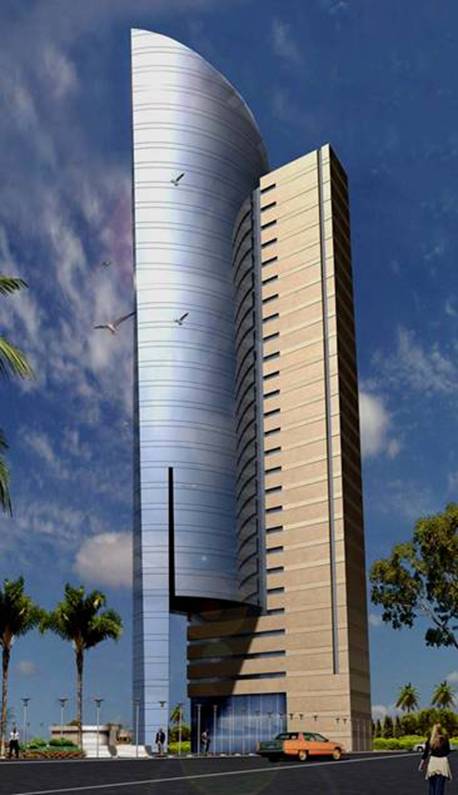
New bank buildings appear, also in Lithuania. The banks SEB, DNB, NORDEA and
UKIO still have their headquarters in older buildings in the Vilnius city centre while
two other banks, Swedbank and Danske Bank, are headquartered in new buildings
just outside the centre. The challenge for banks of today, here as in the rest of the
world, is to express their own identity and at the same time show environmental
adaptation when their new buildings are erected. The picture above illustrates
how I think a new bank building in the Vilnius outskirts can both demonstrate
respect and belonging to the city's fantastic architectural history while also
being innovative, inspiring and audience-friendly. Real materials, such as
traditional bricks, as ‘bottom line’, combined with a future-oriented,
optimistic glass building in front would, in my opinion, symbolize
the future of Lithuanian banking sector in a good way.
Text: Aage Myhre, architect and editor-in-chief
aage.myhre@VilNews.com
I've had the pleasure of studying bank architecture for more than 30 years. My primary task when I completed my master studies in architecture in Norway involved the analysis and criticism of bank buildings, and I touched the subject also later, when I studied architectural psychology in France. Bank architecture is very fascinating because banking is a profession that has always been keen to signal dignity and sometimes power, while money itself does not have a separate visual identity.
Greek temples with solid pillars in front was long a favourite theme, while one in recent decades have experimented with all sorts of, often divergent, symbolism variants.
Also in the Baltic States has one in recent years seen attempts to develop identity buildings for banks; from mafia-like castles with dark glass as the main theme, to more power-demonstrating buildings where Soviet ideology still seems to apply.
Fortunately, there are also brighter examples ...
Let me invite you on a tour through the history of banking architecture, globally and here in this country. Allow me also to share some thoughts with you about why bank architecture is important for the monetary economy's future, and how new bank buildings should best adapt to the long and strong architectural tradition this country represents, even in a global context.
These are my topics of the day:
1. History of bank architecture
2. Pre-war banks in Lithuania
3. Jewish banking in Lithuania
4. Banks during Soviet years
5. ‘New’ banks in old buildings
6. ‘New’ banks in new buildings
7. What should characterize a
bank building of today?
- Bookmark :
- Digg
- del.icio.us
- Stumbleupon
- Redit it
- Posted by - (4) Comment
Old and new bank
|
1. History of bank architecture
|
|
|
Architecture is the ability to see connections. Understanding interior, exterior and outdoor spaces simultaneously.
Understanding of history, present, society, politics and economics. Holistic thinking and understanding. That is what makes architecture so much more complicated than what most people imagine. The checklist in the space programme includes thousands of specifications, but it is far from enough to find answers to each of them. One must also understand to respond to the relationship between them. Responding to the indefinable that glues the points together. In addition, one must intuitively understand what kind of shape one can make out of the functional requirements and the given environment.
You will not become a good architect without having natural talent. But you also to have the ability to listen. Be humble about environment, surroundings, history and human needs. Understanding historical perspectives, psychology, sociology, economics, statics and mathematics at the same time.
It's hard to become a Palladio and Michelangelo today. They had styles to stick to. We have not today. They were raised by wise generations before them. As were craftsmen of those times. Our architects have little time and traditions. Book-knowledge and inspiration is not enough. Therefore, today's architects are often not good enough. Urban planners are in an even worse situation. They should take the lead in seeing contexts, guide architects in holistic thinking. Ensure that the indoor rooms and outdoor spaces play together. Our classical masters showed the way.
But the casino table is often more attractive than the chessboard, both in architecture and in the finance business
Money has no identity. Therefore, it has not been obvious to the world's stock exchanges and banks how to define and symbolize their own identity. Monetary institutions' architecture is a good reflection of that, often using 'stolen' symbols from classical architecture, objects, exaggerated dimensions, etc.
Through the centuries, financial institutions sought to find themselves. But have they succeeded? Not as I see it. I'm actually afraid that their architecture of today indicates that something is wrong with the very money power principles.
The leaders of the Soviet Union, all as one, tried to create communism architectural ideals. Steel and concrete. Distinctive shapes. Power forms. It was like watching the hammer and sickle in the buildings’ architecture.
I see some similar architectural thinking used by the capitalism. Monetary power institutions have tried many 'styles'. Greek columns. Roman ornaments. Gold. Shiny and / or black, opaque facades in mafia-style.
Wall Street and global finance institutions wobble. Maybe the bank architecture of the last 100 years indicated that this would happen, but we did not listen or see?
|
The curious fact regarding the words bank and bankruptcy is that they derive from the economic activity on Ponte Vecchio. The stand, table or bench that held the merchants goods was called a "banco" (“bench”). When a merchant was no longer able to pay his taxes, his banco was literally broken or "rotto" into pieces, therefore creating the term "bancorotto" which translates into the word "bankruptcy" in English. All initiated by the famous Medici family!
|
|
|
|
|
|
ABOVE RIGHT: Scrooge McDuck on his way up to his famous money bin, the world's most unique building in terms of money power. More clearly can it not be said, what this is about. Architecture that tells it all. Scrooge is a wealthy Scottish business magnate and tycoon. He was in his first few appearances characterized as a greedy miser and antihero (as Charles Dickens' original Scrooge was), but in later comics and animated shorts and the modern day he is more often portrayed as a charitable and thrifty hero, adventurer, explorer and philanthropist. A cartoon variant of George Soros and Warren Buffet. |
|
|
|
|
|
ABOVE LEFT: This is a brand new bank building in Riga, Latvia. A building that would have made the Soviet architecturalideologues very pleased. The power symbolism is overwhelming. No humility, beauty or local adaptation. Only raw power. Probably also an attempt to mimic Mitterrand’s new 'triumphal arch' in Paris. But what is it they triumph over here? That the architecture of communism ideals has been resurrected, now symbolising a stronghold of capitalism? And that in Latvia, a country that just recently managed to break away from the Soviet Union's mighty power claws ... ABOVE RIGHT: A new bank building in Udine, Italy. Good symbolism that clearly shows the state of the Italian economy. Truly honest architecture... |
|
2. Pre-war banks in Lithuania

The interwar Bank of Lithuania - Maironio str.25, Kaunas. Very impressive architecture of neoclassicism style. The Bank of Lithuania (1924–1938) was designed by Lithuanian professor Mykolas Songaila, though it was an unknown architect from Paris that won the international competition for the project of the bank building in 1924. The French architect’s project was deemed too complex and expensive by the commission. The building is still in a good condition today. There is a small exhibition of Lithuanian banknotes and coins of the First Republic time inside.

The Kedainiai bank of 1933.

Ukio bankas in Utena, 1934.
3. Jewish banks in Lithuania
In pre-war Lithuania, many members of the Jewish middle class, especially the educated strata, who had already experienced to some extent the establishing of Jewish autonomy, mobilized their resources for the strengthening of the social economic basis of the Jewish masses and their livelihood. With the blessing and initiation of the Economics Committee at the Ministry for Jewish Affairs and with the assistance of the “Foundation”, a national financial system was established of co-operative credit societies. By the end of 1920, these were already active in 44 cities and towns and were named “Peoples Bank” (in Yiddish Folksbank). In addition to the positive local economic activity (extending loans etc) they were also of importance in the social and cultural sphere. In a number of places, the community organs and other organizations also used the bank building. There were also cases of the bank granting study scholarships and prizes for cultural activities.
In order to co-ordinate and regulate the activities of the Peoples Banks in time of need and crises and other difficulties, a central institution was established in 1921, formally called the “Central Jewish Bank for the Encouragement of Co-operation.” 71 Peoples Banks throughout the country linked to it, and the number of (dues paying) members reached 11,000. Over the years, the capital assets of the institutions increased, as did also the amount of deposits and savings. Thanks to that, the conditions were eased under which the loans were granted to members and public institutions. In 1930, 85 Peoples Banks existed in Lithuania with 22,262 members. In that year, 11,953 loans were granted to them and to others in a total amount of 10,249,159 Lit (approximately one million Dollars).
Although the Peoples Bank was open to non-Jews as well, this figure was no more than 5%. The work in the offices, the correspondence and the daily work routine was conducted in Yiddish, and this was also true of the national conventions and conferences, which took place every few years. This was therefore, a Jewish banking system spread throughout the cities and towns of Lithuania. At that time, the total deposits amounted to 14,113,413 Lit (approximately $1.4 million), of which 46% came from the members, 16% from institutions and 48% from non-members. If we take into consideration the members families and all others requiring the Peoples Banks' services, and that of its associates, then we can conclude that they served about two thirds of the Jewish population. Unlike the similar Lithuanian banks, which enjoyed cheap governmental credit, the Peoples Banks had to depend on deposits only. In 1933, a special bank was established to assist Jewish farmers (Yiddisher Landwirten Bank).
The central office was in Kaunas with 31 branches spread out in towns through the land.

The Central Jewish Bank. Kaunas, 1923.
4. Banks during Soviet years

I'm not going to use space on bank architecture that applied over the years Lithuania was occupied by the Soviet Union. But I still wanted to show you, dear reader, a photo I took in November 1990 of a queue I discovered outside a 'bank' in Vokieciu street, Vilnius. Gorbachev had the same day informed that the 50-rouble note would not be worth anything in 48 hours, and everyone ran to their banks to change. I visited this and other banks by then, and still get chills on my back just thinking about how it was ...
After the liberation in 1991, Lithuania inherited the monobank system of the former Soviet Union, with specialized state banks serving specific branches of the economy. They quickly established a central bank at the core of their banking system. They were weak in bank management and lacked staffs with modern banking skills, and no system had an appropriate legal, regulatory, or supervisory framework governing the banks. In some instances fraud and corruption prevailed, encouraged by the relatively permissive regulatory and supervisory environment for banks that existed in the Baltics. All had to decide what to do with the remnants of the Soviet banking system at the same time that they encouraged the growth of the new private banking sector.
Estonia and Lithuania reconstituted the specialized Soviet banks as national state banks and began to privatize them. In some instances the state retains an ownership stake. In Lithuania the state increased its ownership share as part of a rescue effort for some former state banks. Latvia, by contrast, reconstituted the savings bank, then privatized branches of the remaining banks. The residual branches were merged into one bank, rehabilitated, and then subject to formal privatization.
The saving banks were privatized. In the early stages the three private banking systems were similar and grew rapidly. All three have had liberal policies toward licensing new commercial banks, believing that more banks would generate the competition needed to drive down deposit and lending rates, and provide the capital needed to support the emerging private sector.
Many new private banks were established by enterprises that wanted access to cheaper funding than was available from other banks. Little thought was given at first to the implications of this policy for banking safety and supervision.
5. ‘New’ banks in old buildings

Bank of Lithuania headquarters in Gediminas Avenue, built by the order of Józef Montwiłł in 1889–1891. The Bank of Lithuania is the central bank of the country, established 1922. It has the exclusive right to issue the currency of the Republic of Lithuania into circulation and to withdraw it. The principal objective of the Bank of Lithuania is maintain price stability, i.e. as low inflation as possible. In implementing this objective the Bank of Lithuania conducts monetary policy, supervision of credit institutions, management of foreign reserves and performs other functions.

DNB Bank headquarter, Basanavičiaus g. 26, Vilnius centre. Beautifully renovated but hardly practical.

NORDEA bank headquarter, Didžioji g., Vilnius centre. Nicely renovated Old Town building.

SEB Bank headquarter, Gedimino pr 12, Vilnius centre. Nicely renovated building from postwar years.
6. ‘New’ banks in new buildings

DANSKE BANK headquarter, Saltoniškių g. 2, just outside the centre of Vilnius.
A good example of what I earlier called ‘mafia architecture’ – dark windows that cover a shapeless building... Indicates power, money, no transparency... Scary...

SWEDBANK headquarter, Konstitucijos pr. 20A, just outside the centre of Vilnius. Nice building with warm and light colour combinations. But what is the shape supposed to tell us? Two huge loudspeakers? I’m confused...
7. What should characterize a bank building of today, in the outskirts of Vilnius?
|
|
|
|
I think a combination of genuine, original building materials, such as yellow-brown-red bricks will be a good item to include in today's office and bank buildings outside the centre of Vilnius. In such a way we can pass on the legacy of centuries of good architectural traditions as we find them represented in the Vilnius Old Town. The more modern times may be well represented by a far more modern material, namely glass. Above I show three different ways to combine these two building materials. Distinct, modern, traditional and with dignity...
|
|
|
|
|
|
Remember that what is happening between the buildings is as important as the buildings themselves. It is often so that the way the surroundings are planned determine whether a project is successful or not. Again, holistic thinking. There are somany items you can play with, even outdoors. Think water, fountains, bridges, decorations, ornaments; items that tellsomething about what happens inside the building... And most important of all, all elements must have human dimensions. So that people who come to the building will be feeling well, feeling joy. Also, a bank building should radiate kindness and dignified service attitudes towards their customers ...
|
We shape our buildings; thereafter they shape us - Winston Churchill
|
|

- Bookmark :
- Digg
- del.icio.us
- Stumbleupon
- Redit it
VilNews e-magazine is published in Vilnius, Lithuania. Editor-in-Chief: Mr. Aage Myhre. Inquires to the editors: editor@VilNews.com.
Code of Ethics: See Section 2 – about VilNews. VilNews is not responsible for content on external links/web pages.
HOW TO ADVERTISE IN VILNEWS.
All content is copyrighted © 2011. UAB ‘VilNews’.

 Click on the buttons to open and read each of VilNews' 18 sub-sections
Click on the buttons to open and read each of VilNews' 18 sub-sections 






































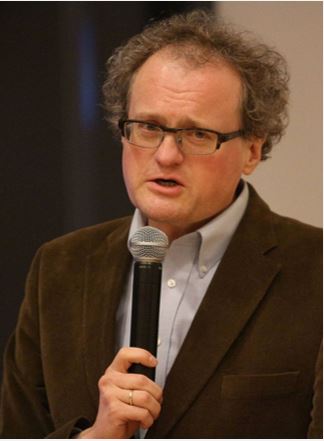
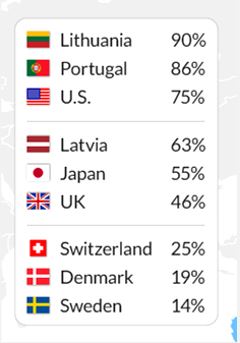
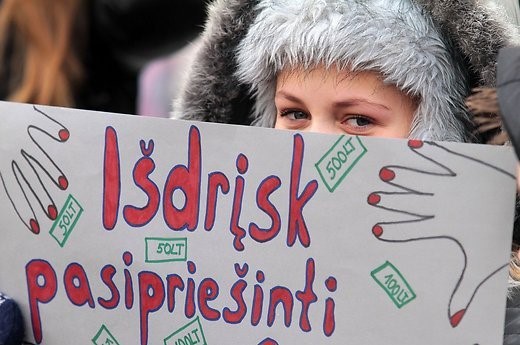


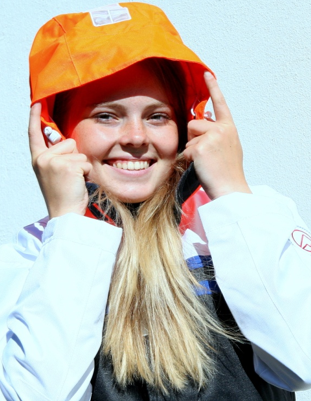
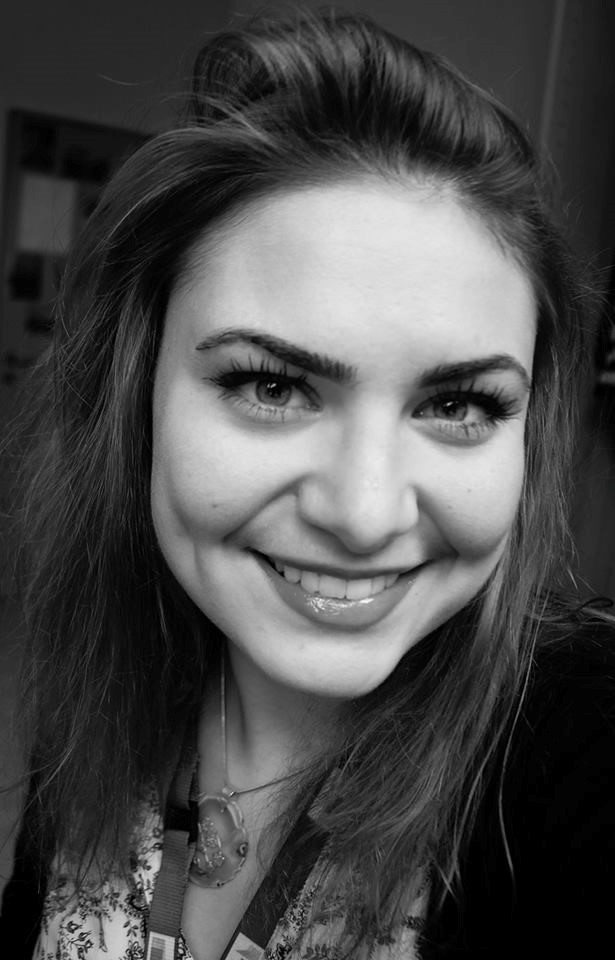
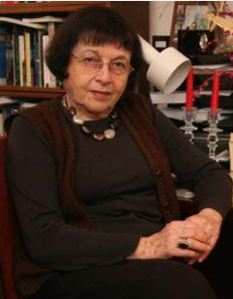
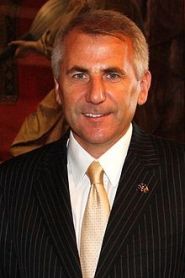
.jpg)
